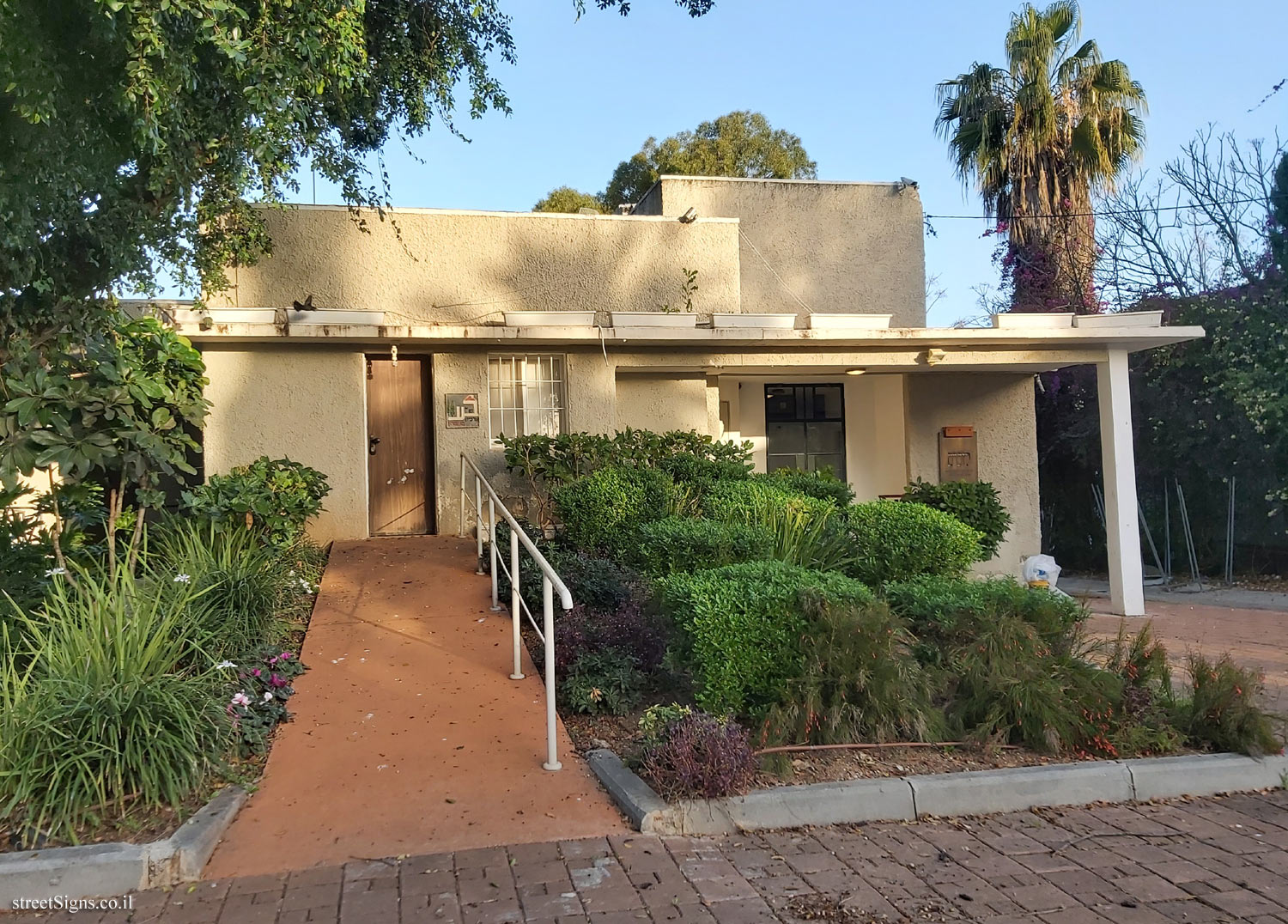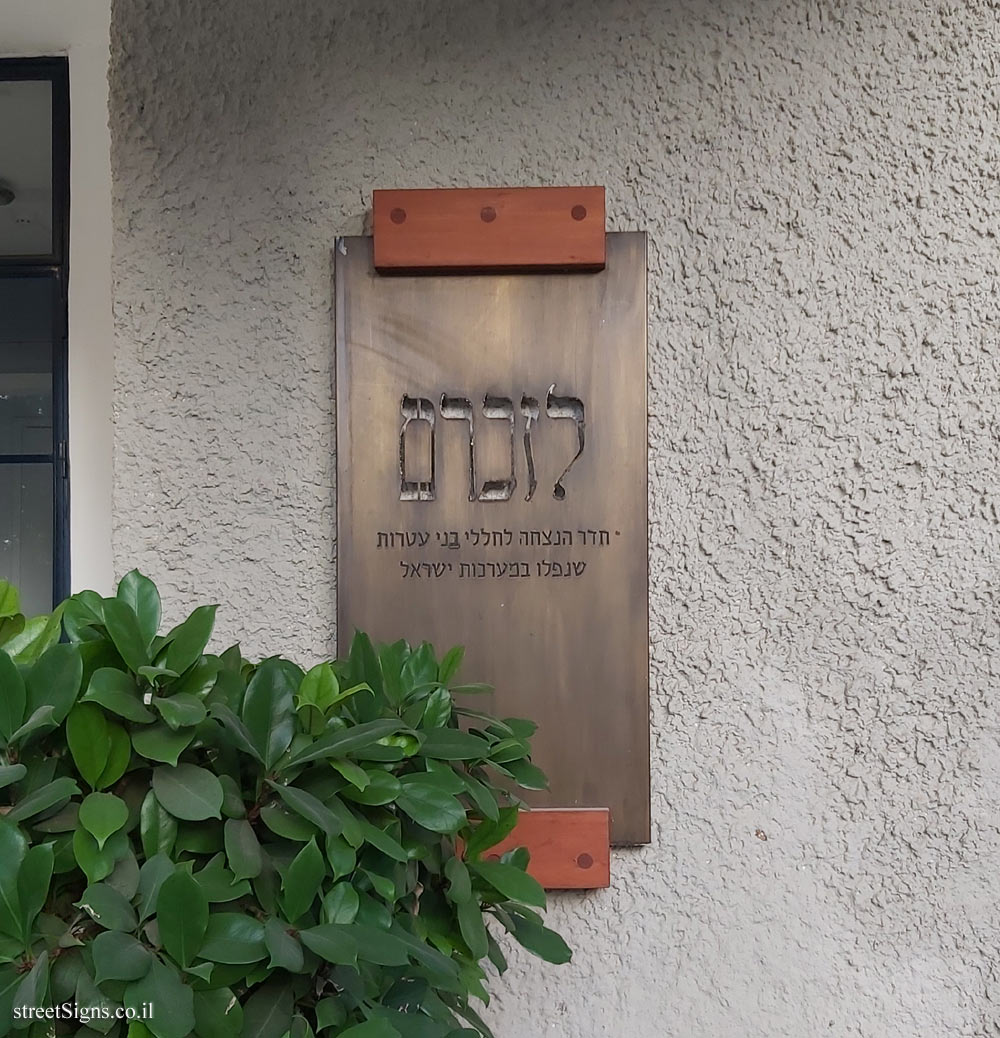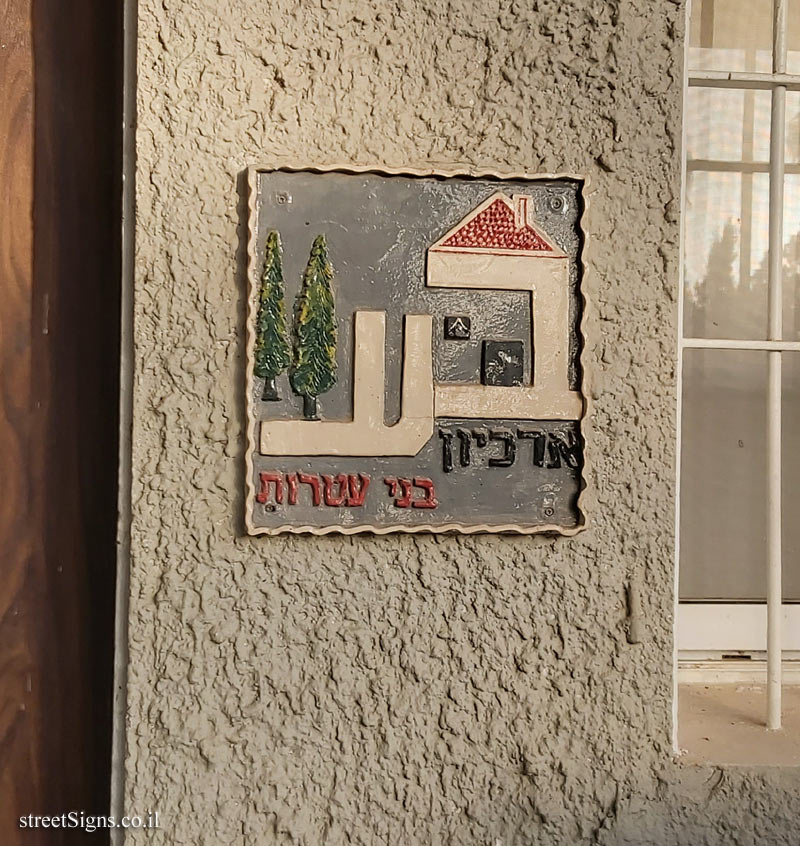The sign shape is rectangular but its head is designed according to the silhouette of the old building of the Gymnasia Herzliya, which serves as a logo of the Council for the Preservation of Heritage Sites in Israel
The building was photographed that day
 Click for a larger image
Click for a larger image As indicated on the sign above, in front of the house is a memorial room, as indicated on the following sign taken that day and found in front of the house:
In their memory
A memorial room for the victims of the Atarot who fell in the Israeli battles
 Click for a larger image
Click for a larger image The building that currently serves as the moshav’s secretariat also houses the Bnei Atarot archive, as will be seen in the following sign
 Click for a larger image Translation of the text on the sign
Click for a larger image Translation of the text on the sign:
Symbol of the Council for the Preservation of Israeli Heritage Sites
Emblem of Moshav Bnei Atarot
Symbol of the Hevel Modi’in Regional Council
The dairy building In 1936 the original dairy building was used to prepare the milk for marketing. In order to obtain a permit to market the milk to the Jewish population in Petah Tikva, a Jewish rabbi lived in the colony with his family.
With the outbreak of World War II the rabbi’s family left and the marketing of liquid milk stopped. The dairy was converted into a dairy for the production of hard cheeses. The cheeses were marketed to the German army and were part of the local population’s contribution to the war effort.
The dairy building was built in an international style, with massive construction technology, all cast concrete. The original cladding (the special thin splash) is known as a "cranztpot". The adjoining building served as the generator room and was kept unchanged.
Today, the building serves as the Bnei Atarot secretariat. In front of it is a memorial room in memory of the victims of the moshav during the Israeli wars.

 Click for a larger image
Click for a larger image  Click for a larger image
Click for a larger image  Click for a larger image
Click for a larger image